Change is a constant and along with real estate market figures, what is 'in' for interior designs and decorations goes in different directions every year.
Knowing what is happening today is for everyone—it allows you to either be content staying in your home for another few years if you can’t sell, staging your home attractively to get the highest sale price or find a home that you can personalize how you would like.
So if you're wondering what are interior design trends for 2024, below are the top trending styles to watch out for:

Minimalism has reigned for a lot of years; now, it's time for maximalism to shine.
Maximalism combines bold articles, vibrant colors, and clashing prints. To begin, add a variety of pillows in different colors and work your way up to furniture, paintings, and wallpaper.
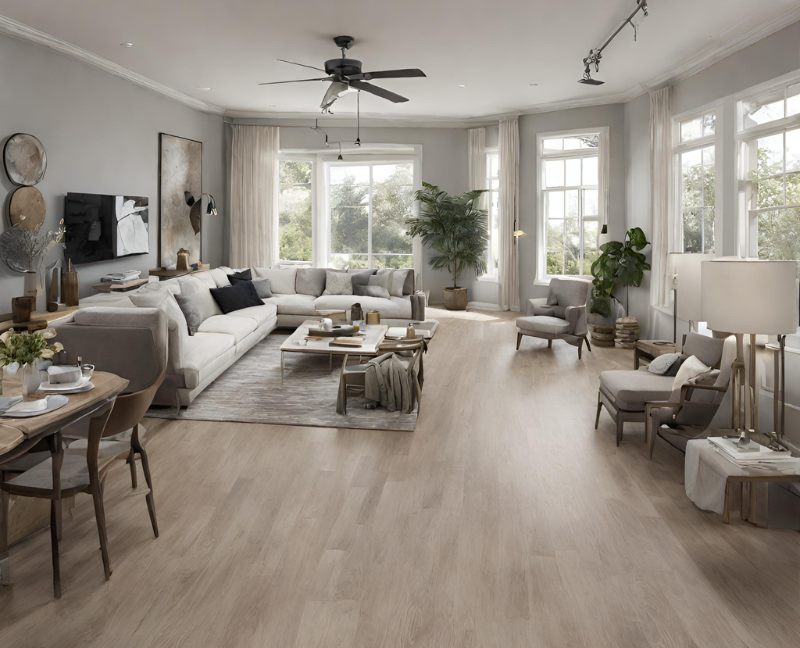
The inside of a house is what makes it a home. Being able to decorate and design your home how you like is one of the perks of homeownership.
As far as home layout, it is becoming more common for new home buyers to opt for great rooms or playrooms instead of a formal dining room. As formal dining rooms are rarely used, consider buying a home without one, or knocking down the formal dining room wall in an existing home to make the kitchen more spacious.
As a general rule, the American lifestyle is becoming much more casual than formal.
Open floor layouts enliven a house and make it far more accommodating, so, fewer, bigger rooms are considered a plus. This is something that can be controlled in more ways than just knocking down walls or buying houses that have wide-open layouts.
Opening up walkways, and diminishing obstructions—including excessive furniture and decorations—can make a big difference.
Also, greenhouse rooms and sunrooms are popular, because so many in Indiana and elsewhere are making being green a priority.
Consult with your startpackingidaho.com or Indianapolis Realtor agent to get their ideas as they see homes every day.

Like how it is in fashion, quiet luxury refers to styling the place using timeless pieces. It's both elegant and effortless, and it's captured the interests of many homeowners.
“The quiet luxury home décor trend is all about living in beautiful places that don't feel overdone,” says interior designer Andrea West.
Simple yet functional pieces, neutral hues, and timeless silhouettes are among the characteristics that characterize quiet luxury. Usually, home décor designs aim for perfection and colors that precisely match; however, with quiet luxury, the goal is to create an inviting, calming space with a touch of sophisticated simplicity.
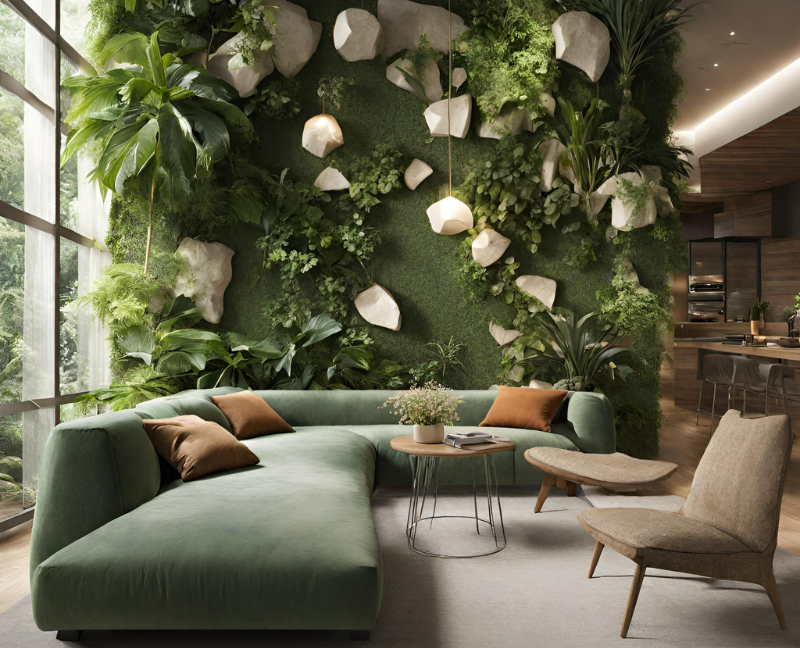
Biophilic design is focused on combining outdoors with indoors. This might include incorporating natural landscape features and natural lights and ventilation. By the end of 2020, the trend for luxurious biophilic design started to grow and this year, it's expected to get bigger.
Living green walls, more indoor plants, large windows for more natural light, and utilizing natural materials like stone and wood are some of the elements present in biophilic design.
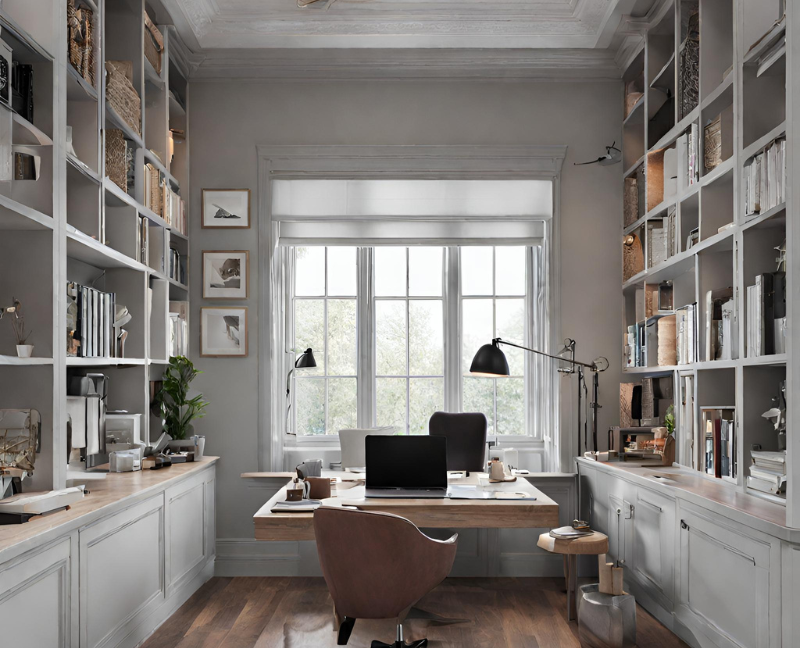
Upgrading home offices started a little over 5 years ago, back when the pandemic forced most of us to work from home.
While some moved back to their good ol' office cubicle, some are still working in the comforts of their very own home. Because of this, the trend to upgrade home offices has become popular.
Some of the home office improvements include:
These are the top 5 interior design trends in 2024 recognized by users and designers worldwide. If you want to elevate your home while on a budget, we have more tips for you. Just check out our website to see free resources you can use.
More and more individuals and business entities are becoming conscious of what's happening in the environment. Part of their effort includes adapting to changes that would support the health of the planet, such as making it more sustainable may surprise homeowners in particular.
Making a house more eco-friendly can lower monthly utility costs and increase its market value. Nearly 85% of American homeowners say they would someday like to live in a greener home, according to Realtor.com. Therefore, a home may have a larger return on investment for any implemented eco-friendly project if it caters to individuals included in this statistic.
Fortunately, many home upgrades have a significant environmental impact with little homeowner effort. Some of these include:
Many people lower their water expenses by replacing toilets and faucets with low-flow models that work without waste.
Other homeowners who have more time may install new flooring. Due to their low waste and environmental impact, reclaimed wood and bamboo are popular.
While some bathroom improvements may not enhance sustainability, many clever materials reduce waste. Recycling trash, buying used furniture, and using low-volatile organic compound paint is eco-friendly without losing quality.
While planning a DIY upgrade, assess the ability and materials needed to decide if professional help is required. Performing these undertakings alone can be dangerous and time-consuming. If in doubt, consult a pro for an excellent job.
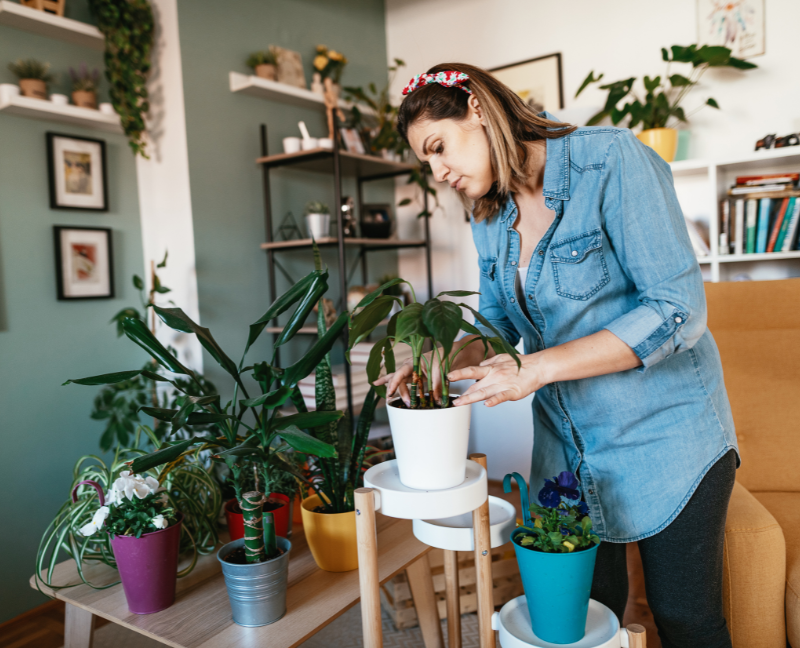
What's outside matters just as much as what's inside when creating eco-friendly homes.
Lighting an outdoor space with inefficient light is a lost battle; however, solar-paneled pathway lights can recycle energy from sunlight. These fixtures can also bring ethereality to a garden while conserving money.
Sustainable outdoor furniture is also essential. Choose lightly used items from internet markets or thrift stores when in doubt. Certified wood and recycled plastic outdoor furniture are also available.
Any outdoor space can also use solar panels for higher expenditures. The initial installation may cost a couple of thousand dollars, but the utility expenses will drop afterward. Renewable energy, like solar panels, gets most of its power from the sun and stores it for a rainy day. Residents can pay for these panels monthly to own them and enjoy sustainable energy for life.
Composting is another option. Put organic materials and food waste here, which will break down into rich soil for cultivation. It lessens the need for artificial fertilizers and boosts curb attractiveness.
Home renovations like switching incandescent lighting with LEDs, which last longer, consume less energy, and cost less, can help lower electricity bills. More savings come from energy-efficient appliances. Over time, washing machines, dryers, and refrigerators have become more energy-efficient.
Older models are notoriously energy-wasting; therefore, decreasing utility bills through smart appliances will help offset higher initial costs. Moreover, checking energy leaks from poorly sealed windows, especially for heating and cooling helps. Older homes with excessive leakage should have their windows sealed or replaced.
Do you have more tips on how to save energy or turn your home into a sustainable one? Feel free to drop them in the comments!
Green roofs provide both a natural and symbolic breath of fresh air in the busy concrete jungles that are today's cities. These inventive installations improve urban landscapes and the environment by decreasing heat, stormwater runoff, and air pollution.
This post will discuss how green roofs work, enabling city people to develop thriving green areas on top of their structures. The below ideas will show you how to grow beautiful green roofs and how they benefit the environment and community, whether you're a seasoned gardener or a beginner.
Plant-filled green roofs are also called living roofs. They are environmentally friendly and encourage sustainable development. Creating a green roof requires a waterproofing membrane, root barrier, drainage layer, growing medium, and vegetation. Green roofs' main goals are sustainable energy, stormwater management, and a healthy environment.
Green roof vegetation and substrate absorb precipitation, lowering pressure on drainage systems and flooding danger. As insulation, green roofs reduce heating and cooling needs, minimizing building energy consumption. They improve air quality and mitigate climate change by catching pollutants and carbon dioxide.
Meanwhile, rooftop gardens extend green roofs into outdoor living spaces for cultivation, recreation, and community participation. Beyond ecological benefits, rooftop gardens emphasize social and economic benefits.
Rooftop gardens are communal and entertainment settings. Sitting places, strolling trails, and playgrounds can be added to these gardens to create relaxing, social, and community spaces. It can also be a place where residents relax and connect by providing a break from city life.
Urban agriculture should be done outside to encourage sustainable food production. On your rooftop patio, grow fruits, veggies, and herbs in raised beds or containers. Use composting to recycle organic waste and feed plants.
Sustainable rooftop greenhouses mix agriculture and design. These unique structures allow rooftop farming of fresh produce. Sustainable design improves rooftop greenhouses' environmental performance. Install rainwater collecting, solar panels, and composting facilities to lessen your roof decking's ecological impact.
Hang baskets, pots, and cascading vines from pergolas or trellises. These designs produce a green curtain effect and provide visual appeal to the rooftop deck or patio, making it a beautiful green retreat. Rooftop greenhouses improve energy efficiency, air quality, and food sustainability using vertical space and modern growing methods.
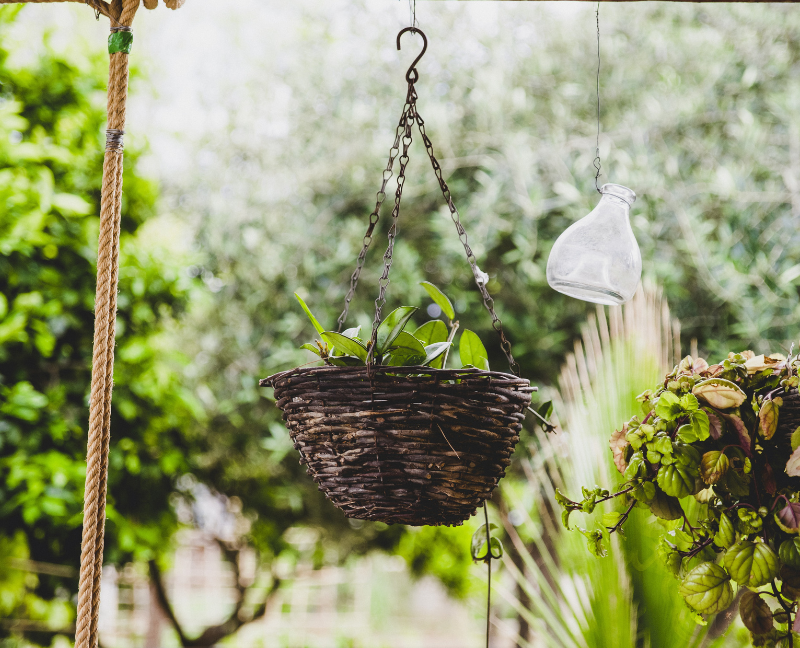
Create rooftop greenhouses with giant planters or raised beds. Easy maintenance, plant selection, and transportation are possible with this strategy. It works for studio apartment rooftop terraces with weight limits or limited space.
Plant local herbs and medicinal plants on your rooftop patio. Put culinary, medicinal, and fragrant herbs in separate sections. Practice and wellness are combined in this design.
Native plants thrive in local climates, require less care, and shelter wildlife. Ecological balance and indigenous plant conservation are achieved using this method.
Make rooftop gardens into sustainable and learning areas. Signage, information boards, and interactive displays could explain rooftop gardens, native plants, and other eco-friendly techniques.
Make the rooftop terrace a relaxing urban home. Create a soothing atmosphere with fountains or tiny ponds. Plants, trees, and water elements make these gardens a welcome respite from the city. They help preserve urban biodiversity by housing birds, butterflies, and other animals.
Creating a rooftop garden outdoor living space lets you relax, connect with nature, and enjoy the scenery. Select comfortable and sturdy outdoor furniture that matches your style and preferences, offers comfy seats and shade structures, and adds fragrant plants to enhance the sensory experience, illumination, and relaxation. For extra coziness, add plush cushions and pillows.
A rooftop terrace seamlessly connects indoor and outdoor living spaces. Residents may rest, party, and enjoy city views in its adaptable outdoor living and dining area. Rooftop terraces offer a retreat from the city with lounge seats, dining areas, and hot tubs. Design your roof decks for inspiration, socializing, and outdoor activities. It can create relaxing lounges or dining areas beneath covered pergolas.
Conclusion
Rooftop makeovers serve as an inspiration for creative design concepts and upcoming advancements in the building sector. Green areas are being incorporated into building designs by architects and urban planners, who are putting sustainability and the welfare of the community first.
In the ever-changing real estate market, homeowners often end up with lots of questions than before, such as "How can I sell my home faster?"
If you're one of these home sellers or you're just curious about the best ways to put your home on the market, then you're in the right place!
In this post, we will cover the best ways to sell your home to maximize your return on investment, whether you're moving for work, downsizing, or simply needing a change.
Just how hard is it to sell a home?
All you have to do is tell everyone you know that you're selling your property and/or take photos and videos and post it online.
If only it's that easy. Selling a home is more than just putting your house on social media or telling your family and friends about it. It's a long excruciating process that may need a few boosts or guidance to be executed quickly and properly.
Here are some things to do to sell your home:
An agent's market knowledge helps you price your property competitively. They ensure your home is priced correctly in the market using their hyperlocal experience. A good agent brings in stagers and photographers to make your home appear its best in online advertising and open houses.
A real estate agent's services provide the following advantages:
The possible disadvantages of having a real estate agent are:
As the name implies, FSBO is a homeowner-driven technique where the property owner acts as a real estate agent. They individually schedule and manage property visits. Homeowners also ensure essential documentation meets local and state requirements.
Advantages of FSBO use include:
Using FSBO may present the following difficulties:

Homeowners can market their houses on internet marketplaces, thanks to real estate digitalization. Buyers and sellers can easily use many popular platforms.
The advantages of utilizing online marketplaces are:
The possible disadvantages of using this are:
Auctions sell properties to the highest bidder after a fast-paced bidding procedure. Online platforms, independent auction houses, and real estate corporations can hold these auctions. Traditionally, bidders attend live auctions at an auction house or property.
Advantages of real estate auctions include:
Using auctions may present the following possible disadvantages:

Selling your home can be tricky; luckily, there are many ways how to do it. Here are more tips for selling your home:
Homes are bought outright by cash buyers without mortgages. This unusual strategy appeals to homeowners seeking speed and ease. People, real estate investment corporations, and specialized companies may buy family houses, apartments, and rental properties for their diversified investment portfolios.
Advantages of this method include:
The following potential risks could arise from using this method:
Real estate methods like lease options and rent-to-own benefit buyers and sellers. The agreement's terms and conditions usually differ. Rent-to-own tenants must buy the property or forfeit their rent premiums after renting it for a defined period.
The advantages of rent-to-own and lease options are:
The ret-to-own and lease options may present the following difficulties:

Home Staging
Furniture and decor are arranged to highlight the property's best qualities and appeal to a broad audience during home staging. Removing family images while arranging the home helps buyers visualize themselves there.
The following are some of its advantages:
Virtual Tours
New virtual tours let purchasers tour homes from their screens. These 360-degree 3D digital walkthroughs let customers explore every corner of a house.
The following are some of its advantages:
Conclusion
Selling a home is a significant decision that needs careful planning. All these things to do to sell your home methods will help you if you want to sell your home. It's crucial to realize that no approach works for everyone. Each selling strategy has pros and cons. Those are the best options on how to sell your home but they will rely on your tastes and market knowledge.
Gone are the days when traditional roofing materials included asphalt and concrete tiles; now, there's a new competitor that focuses on using sustainable energy -- solar roofs.
A huge number of homeowners seeking energy efficiency end up choosing solar roofs because of several reasons. For one, it combines innovation and functionality, and two, it helps lower electric bills and carbon footprint.
In this post, we'll dive deeper into how solar roofs work, their pros and cons, and things to consider if you plan to install one in your home.
Like a typical roof, it protects the home and its dwellers against weather-related issues, including rain, wind, and snow. However, it's more than that as it can produce its energy.
PV panels or solar shingles are directly incorporated into the roof to harness sunlight's power—a smooth, appealing, energy-generating roof.
Solar roofs generate electricity using cutting-edge technologies. These roofs use monocrystalline or polycrystalline silicon solar cells in solar panels or tiles.
When sunlight hits these cells, an exciting process happens. Electric current flows from your solar roof's photovoltaic (PV) tiles when sunlight strikes them and is absorbed by solar cells. Your solar inverter receives this direct current (DC) energy and transforms it into alternating current (AC) energy, which powers your house.
AC powers most homes and appliances. An inverter converts DC electricity into AC before usage. Usable electricity can run home appliances or be supplied back into the grid, resulting in electricity bill credits. Solar technology in roofing materials like tiles and shingles lets homeowners preserve their home's appearance without installing cumbersome solar panels.
Solar roofs benefit both homes and the environment; plus, it's aesthetically appealing. Below are some advantages of solar roofs:
Today's climate-conscious world emphasizes the importance of renewable energy sources. Installing a solar roof benefits the environment in more ways than one:
Solar roofs seem to make a lot of financial sense, in addition to the obvious benefits they provide to the environment:

The installation of a solar roof allows households to achieve greater energy autonomy:
One of the major drawbacks of solar energy is the high initial costs of the equipment and installation. However, leasing options can lower your initial expenses if money is a concern. Should you decide to purchase, you will have to occupy your house for a certain amount of years until the system becomes self-sufficient. Renters are less suitable for this long-term investment than property owners.
One of the main drawbacks of solar energy has been the brief drop in energy production during inclement weather. However, because of advancements in battery technology, the impact of days with minimal solar energy is decreasing.
Alternatives to outdated solar energy storage technologies, such as lead-acid batteries, are emerging. Higher power at a reduced cost is provided by lithium-ion batteries. Batteries built with nickel have an incredibly long lifespan. New technologies promise large-scale and long-lasting power storage, such as flow batteries.
When it comes to solar roofs, orientation matters. Your roof won't be able to collect enough solar energy if it isn't facing the sun. Flat roofs are typically less effective than roofs that tilt toward the sun.
Solar panel installation is facilitated by roofing materials including metal, tiles, and asphalt shingles. The cost of installation might be higher if your space is constructed of different materials. The capacity of roofs to hold solar panels contributes to their energy-efficient characteristics.
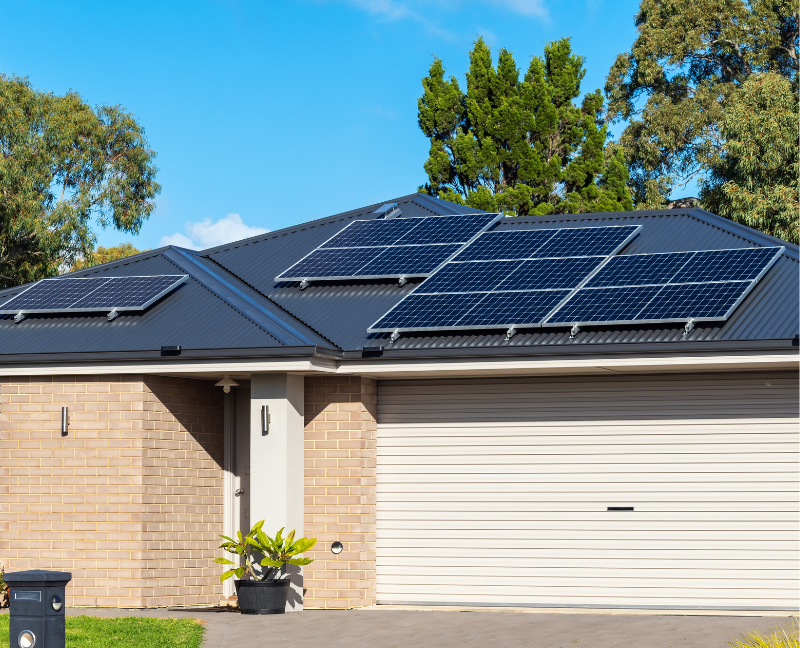
Installing a solar roof benefits the environment and your finances as well. However, to know if a solar roof is worth it for you and your home, you have to consider a few things first:
Before adding solar panels or tiles, check your roof's support. Considering the roof's condition can prevent future issues and prolong the life of your solar system. Normally, it's better for new roofs.
Some roofing materials need to be more suitable for solar installations. If you have a concrete tile roof or a steel roofing tile, visit a roofing and solar firm to understand the installation consequences. Traditional asphalt roofs are usually compatible. The roof design, slope, and orientation also affect solar system effectiveness.
Solar roofs are expensive, so evaluate all costs:
Solar roofs work best when tailored to your home's energy needs:
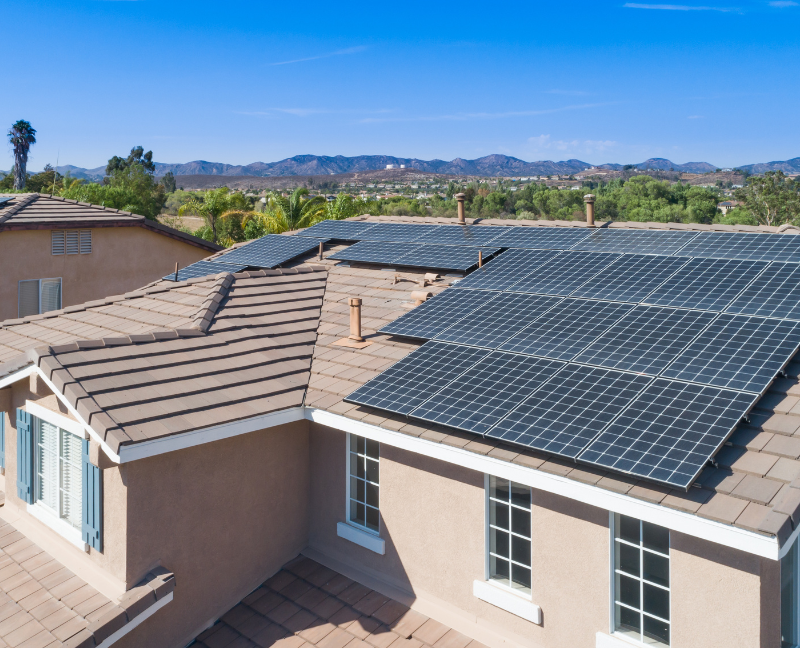
Local laws can differ; therefore, it's essential to know what the rules are where you live:
As with any significant home upgrade, installing a solar roof is just the beginning. To extend the life of your investment, you have to take care of it just like your other assets.
Low-maintenance solar roofing. Basic tasks can optimize system performance:
Knowing your warranty and repair needs can prevent problems:
Solar roofs are more than just eco-friendly—they represent the future of clean energy and sustainable living. The move toward renewable energy sources like solar power is vital to meeting the world's energy needs sustainably.
As more people choose to work from home, there is a greater demand than ever for a dedicated, fashionable home office. The thing is, it's not just about the aesthetics; it's about the increased productivity with the best home office spaces that showcase your personality.
This post will help you understand the importance of organizing a home office and how to design it.
As office trends shift toward remote work, having adequate floor space for a dedicated office space influences purchasing decisions. Homeowners are no longer pleased with a dark and dreary basement workstation. Instead, remote work requires homeowners to convert a visible location into a dedicated and functional home office space.
This change emphasizes the need to incorporate functional workplace design ideas into your environment. A well-planned office arrangement not only provides comfort during lengthy work hours but also improves the entire appearance of your home.
A rising number of professionals, particularly in crowded locations such as San Francisco, recognize the need to provide specialized space. It's not just about the square footage; it's about designing an area that reflects current workplace design trends while also creating a functional and stylish ambiance.
Working in an isolated but pleasant place improves well-being. To make this statement a reality, here are eight elements you should have in your home office to increase productivity:

Choosing the proper desk chair is an important step in planning any workplace environment. It doesn't matter if it's traditional or contemporary since both designs have their advantages. Aside from the looks, the focus is on comfort and ergonomics.
Investing in an ergonomic chair is essential. It's a critical piece in the home office setup. It's beneficial to the body without the need to sacrifice style.
So, why choose an ergonomic chair?
The purpose of an ergonomic chair is to provide comfort and support your body's posture. It allows you to:
Meanwhile, choosing an adjustable desk allows you to alternate between sitting and standing, which is beneficial for your health.

Any office design relies on lighting. It improves mood, productivity, and eyesight. Instead of fluorescent or overhead lighting, natural light is warmer and friendlier. Working near a window might be relaxing if you have a window overlooking a beautiful skyline or a quiet neighborhood.
Adjustable task lighting can illuminate a work surface without wasting energy or emitting heat. A suitable desk or floor lamp helps you focus the light if you work late or on gloomy days. A lighting professional might recommend desk lamps or overhead lighting for a relaxing atmosphere.
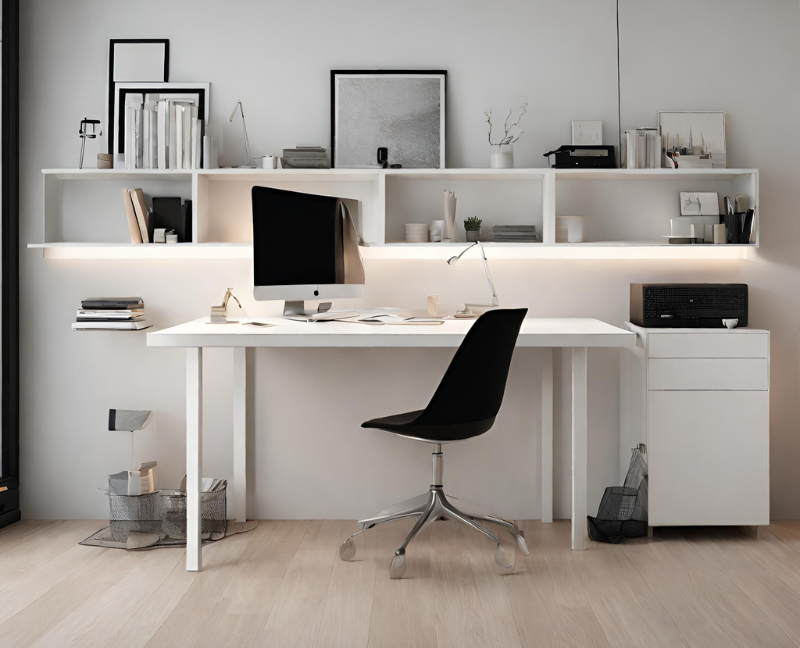
Decluttering boosts productivity and reduces stress. It creates a setting that eliminates distractions and stimulates creativity without compromising personal style, not just white walls or floor space.
There are creative storage solutions that can make your workspace appealing and functional at the same time. You can look at Pinterest for ideas on how to design your area or check our blog posts.
You can also learn how to manage your cable to improve workspace safety and efficiency.

Your workspace is more than functional—it shows your style and imagination. Your routine might be inspired by adding meaningful aspects. Imagine creating an energizing and motivating workplace.
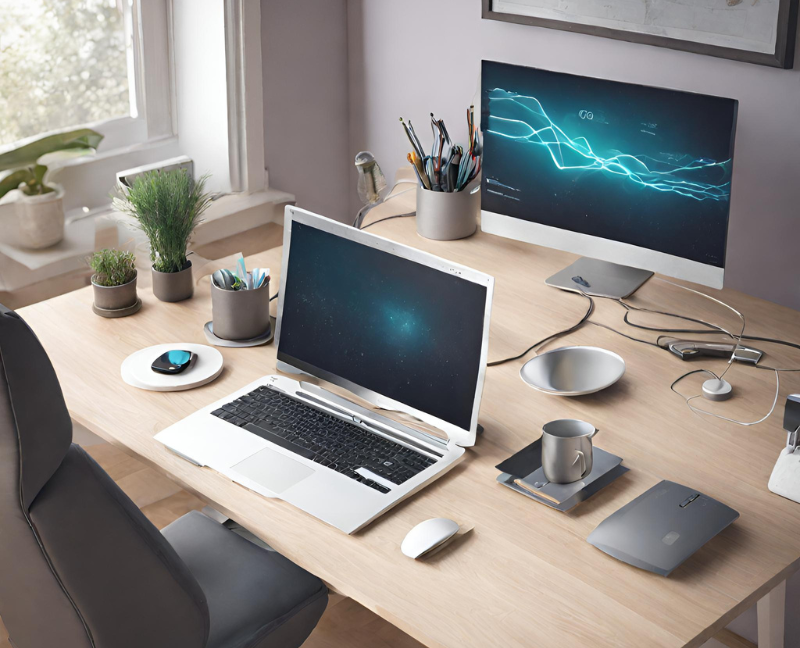
Quality tech equipment and an efficient home office go together. High-speed internet powers modern home offices. Real-time project management, cloud-based collaborations, and online meetings require a strong internet connection.
An excellent internet connection and providers are essential for success. A powerful computer, ergonomic keyboard, and high-resolution monitor boost productivity. One voice command might control your office lights, thermostat, and coffee maker.
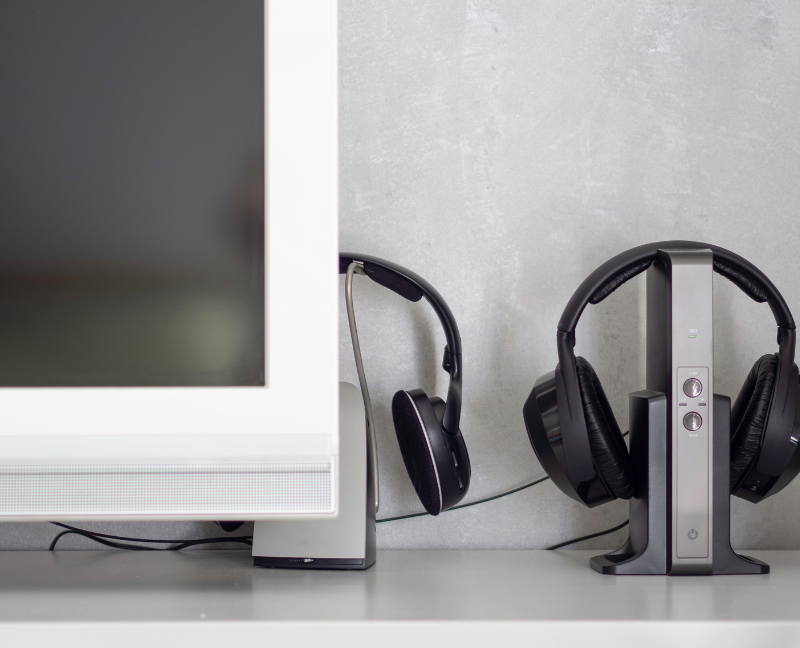
It's essential to have a peaceful workspace. Work productivity and concentration are hampered by noise, therefore soundproofing your office from noise is a wise move. Acoustic panels or foam tiles can greatly minimize street and family noise.
Modern office workers, especially those without a dedicated workplace area, love noise-cancelling headphones. These headphones provide an instant quiet zone for work and concentration. Headsets help create quiet time to focus and increase productivity.
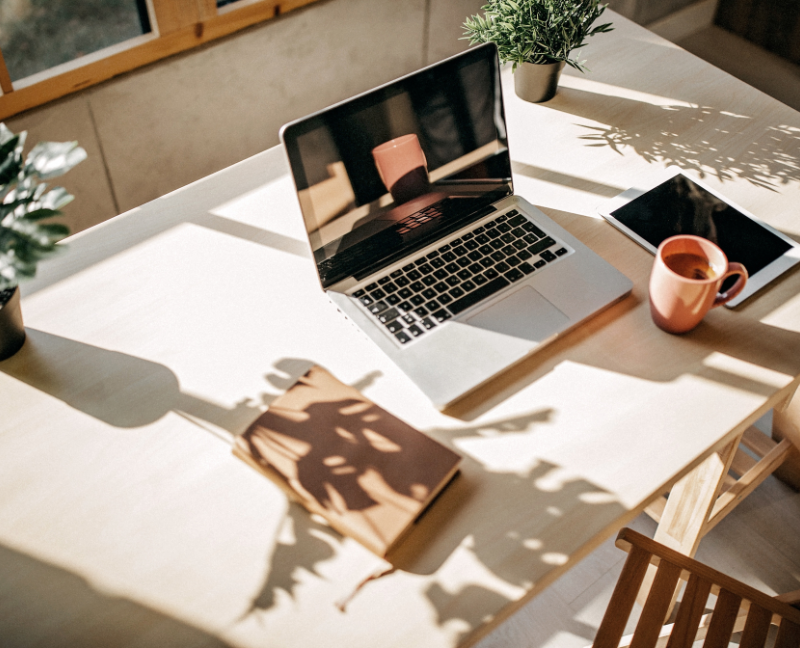
A well-designed office includes spaces for short breaks to keep the mind sharp and creativity flowing. Each office needs a comfortable area. The home office should be designed as a place to relax, whether in a bean bag or an ergonomic chair. A coffee station or mini-fridge is a great office addition. Adding plants and soothing decor to your workspace provides a retreat.
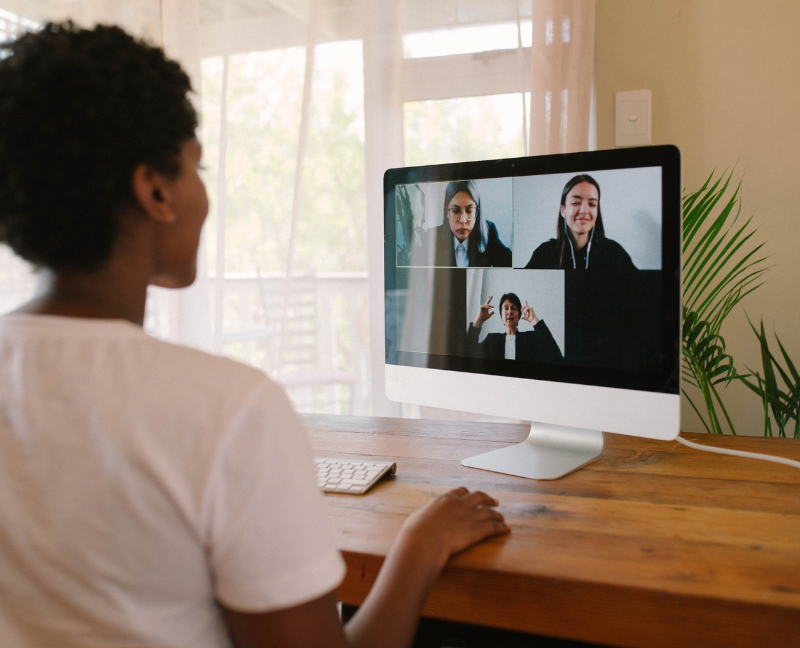
Adaptability is crucial in changing times. Your space must adapt whether you change careers, technology, or office design. If your workplace design is good and your work needs to be altered, it can adapt rapidly. Many professionals are considering hybrid work arrangements due to the global shift toward remote employment.
Today's professionals need to know how to design office space at home to be more productive. Proper lighting, organization, and design boost performance.
It also implies using technology, soundproofing, design concepts, and ergonomics to increase performance.
Want more ideas on how to level up your home? If yes, click this link today!
First impressions are crucial when closing the deal on a home. Before even entering a property, potential buyers frequently form opinions. The attractiveness of home staging takes into play at this point in the process.
This post will share the best home staging tips and explain how important staging is when selling a home.
Want to learn more about home staging? Check out these resources:
It is not enough to make a house seem nice; home staging is also an effective marketing strategy that can influence how a prospective buyer perceives the space. When compared to properties that are either vacant or poorly displayed, homes that have been staged typically sell more quickly and at greater prices.
Staging a home can make buyers feel more emotionally connected to the property, resulting in a quicker sale. This is accomplished by highlighting the home's potential and assisting buyers in visualizing themselves living there. Below, you will find the best home staging tips that you can consider to get an excellent first impression of your prospective buyer.
Here are the ten best home staging tips you may consider
To make the space neutral and clean so prospective buyers can picture their belongings, it is imperative to remove personal belongings and extraneous clutter.
The outside is one thing that potential buyers see. Enhance your home's curb appeal by adding new landscaping, keeping the lawn in good condition, and creating a welcoming doorway.
If you want to appeal to a wide variety of interests, keep a neutral color scheme for the walls and the furniture. This makes it easier for buyers to visualize the possibilities for their interior design concepts.
Furniture should be arranged in such a way as to enhance the flow of every space. It is essential to draw attention to the function of each room, whether it is a cozy spot for reading or an organized home office.
Showcase the actual proportions of the spaces by utilizing furniture of a suitable size. A space can feel cramped by things that are too large, while a room can be made to look spacious by items that are too small.
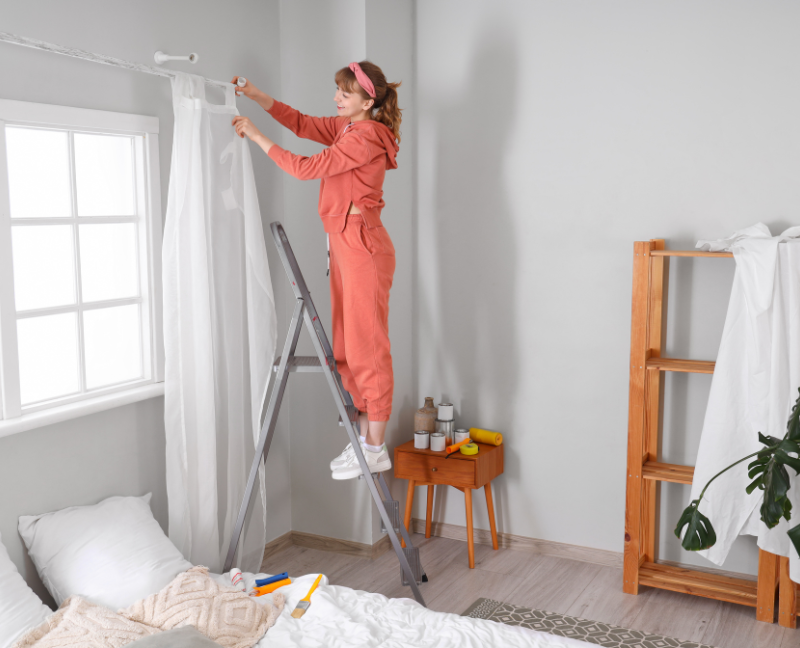
Put natural light into the room by opening the curtains and blinds. Having well-lit areas makes them appear larger and more appealing.
Use accessories such as carpets, artwork, and cushions to provide splashes of color and make the space more visually attractive. You should keep the space manageable, but remember that less is more.
You should highlight important features to attract attention to distinctive designs or selling points, like a comfortable fireplace or a breathtaking vista.
Adding fresh flowers or indoor plants into the design of a space may infuse it with vitality and create an atmosphere that is welcoming and comfortable.
Consider showcasing a room as a model room if the function is only apparent after some time. For instance, you could turn a space unused to its full potential into a home gym or a guest room serving something.
When selling your home, understand that staging is about presenting an appealing narrative that hooks potential buyers' hearts and minds. Above, you can understand how important is staging when selling a home. Adhering to our best home staging tips can help you foster a closer connection between a buyer and a property.
Real estate brokers can reach a large number of prospective buyers by holding an open house, including people who might have yet to see the property. It provides a relaxed setting where interested parties can take a leisurely tour of the house and get a sense of what it might be like to live there.
If you're a real estate agent searching for open house ideas that can improve guests' experiences and distinguish your property from others, then you’ve come to the right place.
Here are some of the best open house ideas for real estate agents that can help their “For Sale” sign into “Sold.”
First, make sure that you advertise your open house on the Multiple Listing Service (MLS) and social media platforms. Update the listing with the open house date and time for the week and tag the location with the necessary details. You might not have followers, but your city has and others might find it in that way.
In line with the statement above, Instagram and TikTok are some of the best platforms to promote an open house. You can also market your listing in local Facebook Groups, your page, and neighborhood websites. Attract more attention by using high-quality photos and videos highlighting the home’s best features.
An excellent open house invitation or flyer can spread the info. Add a Photo Gallery Block with property photos or a Video Block with a customized video tour or message. You may send your flyers and invitations via text, email, or a shareable link on social media. Encourage followers to share them with friends and family.
Inviting neighbors to your open house can increase traffic and sell the home. Real estate has a 10, 10, 20 rule. When you get a listing, knock on ten houses on each side and twenty across the street. In condos, slip a flyer under the front door, which includes an invitation and QR code.
Add a Google Maps link to all your messages, including emails inviting people to your open house or posting images to social media to make it easier for people to locate you.

Going to the area an hour before the open house and posting 30 signs on the busiest roads and crossroads can help. Add arrows on signage that will lead people into the neighborhood and to the residence.
Balloons attract attention, without a doubt. It’s giving a “Hey, something's happening here!" vibe so it makes sense to put balloons in open house signs, mailboxes, porch railings, and other places to easily catch attention.
The day before the open house, clean the sidewalk and the entryway. Bring some greenery to the front door with a few urns, a branded welcome mat, or a giant door wreath.
Use a large framed sign on an easel inside the door saying: "Welcome!" This is a great way to invite them in and make them feel comfortable. Be sure to give a genuine smile, greet them at the table, prepare goodies, encourage them to ask questions, and let them explore the home.
Set up an attractive table for customers to sign in and receive your card, brochure, or other information. Sign in with a digital tablet to appear professional and avoid deciphering messy handwriting. Put fresh flowers on the table and a dish of hard candy for visitors to enjoy.
Make sure you greet guests with a smile and offer to answer any inquiries. When they're done exploring at their own pace, step back and observe.
If your open house is in a cool location or the property has an exciting history, record a video and play it on a tablet or TV. At the end of the video, use a QR code to let guests rewatch or share the movie.
Provide packets with your branding for guests to take and utilize throughout the house. Include basic housing information like square footage, bedrooms, school district, and niche-selling elements like local history or nearby parks, shops, and restaurants.
Use tent cards to highlight a few of the house's best characteristics. QR tags on tent cards can offer visitors on-site security and heated floor information.
To assist buyers in exploring such a large property, strategically place framed floor plans throughout. To help children understand their location and the rest of the house, include a red "you are here" dot.
We hope these tips help in your next open house. We’ve gathered additional expert advice in Part 2 so be sure to click this link to learn more.
Most towns allow residents to eliminate large, bulky, or complex items on designated days of curbside clean-up (also known as bulk trash pickup).
And if you're living where this is implemented, here's how you can get the most out of it.
Find out the day when bulk trash pickup occurs. Some municipalities hold one monthly while others host spring or fall annual or biannual events. Meanwhile, larger cities may plan two or more local curbside clean-up days.
Once you find out when yours takes place, set a reminder on your calendar so you won't miss it.
The "what" is almost as crucial as the "when" regarding bulk trash day information. There are a lot of different regulations about what your community will accept. Some things are widely considered acceptable (carpets, lamps, swing sets), some are typically prohibited (propane tanks, concrete, hazardous chemicals, and many are in between -- which means others may allow them but others won't (small appliances, batteries, yard waste). The resident's responsibility is to do the proper thing with your trash.
Need tips on how to clean your home? Check out these resources:

Prepare for the clean-up day to get the most out of it. Do something about the attic and basement, clean up the garage, and look at what you have. Sort items into bags or piles labeled with Keep, Donate, and Discard. Then, put what's left to the curb, excluding anything that needs a recycling or hazardous trash disposal trip.
To be more specific, the Great Depression. Those who have survived challenging economic times are specialists at making do with what they have and trying to get by. Nowadays, many people like repurposing everyday items that would otherwise go to waste.
Put your trash on Facebook Buy Nothing groups, or Freecycle to find a good home, but be sure to learn about free-stuff etiquette first.
You may also donate to thrift stores and charities. People without transportation or mobility benefit from many organizations' pickup services.
A neighborhood swap meet is a perfect occasion to gather everyone. You can choose a weekend and a venue to "shop" other's pre-loved items and at the same time, get to know the people around you.
Hold a neighborhood yard sale a week or two before curbside clean-up day. Collaboration benefits everyone because multi-household sales get a lot of traffic. If your neighbors are civic-minded, you could collectively sponsor a block party or a pocket park with perennials and a picnic table. Simple seller standards and a little planning will help your transaction succeed.
Follow your town's trash and disposal guidelines to avoid accidentally breaking, leaking, scattering, tempting scavenging animals, or causing other issues.
Take note also of the weight restrictions and item limits. Avoid mixing prohibited trash with allowed ones. Check what time you can put old stuff on your curb. Collectors of copper wiring break apart products like air conditioners, leaving chaos. Discard appliances last minute.
Once you start to get rid of used items down the street, pickers, such as scavengers, salvagers, curb shoppers, scrappers, or gleaners, might come. So if there are items that aren't up for grabs, put them away from the curb to avoid confusion.
On curbside pickup eve, some wealthy would-be HGTVers shop your block. Treat them well—many of them make a livelihood from salvaging. If someone investigates your soon-to-be-ex-property, don't get offended or alert the police. Remember: Once you release something, you lose control over who gets it.
Here are more tips to help you with this:
Salvagers should be respectful as well. If you see an abandoned dresser or bread maker that you want, pull over and turn on your hazards to avoid impeding traffic. Carefully search for items you want without making a mess.
After getting your valuables, put the other stuff aside or neatly back. Don't invade homes or complain about appliances' functionality. Finally, wave and thank neighbors on their porches or outside their windows.
Do you have more tips on how to do curbside cleaning? If yes, feel free to drop them in the comments!
"Less is more" provides a practical alternative in a society where distractions and clutter are widespread. The minimalist lifestyle fosters a deeper and more meaningful journey by removing excess and highlighting essential elements.
Prioritizing personal growth, relationships, and experiences over material possessions and superficial desires characterizes the minimalist lifestyle benefits.
As individuals increasingly strive to simplify and scale down their living environments, this minimalist lifestyle mirrors a broader cultural transition towards simplicity and sustainability.
If you're contemplating adopting a minimalist lifestyle, here are several reasons why you might be inclined to explore its minimalist lifestyle benefits.
Reducing the amount of things and activities you engage in is a necessary part of leading a minimalist lifestyle. This will allow you to live a life that is easier to access and less stressful. When there are fewer things to worry about and work on, you will have more time and attention to dedicate to the important things.
You can save money by becoming minimalist in a variety of ways. You can save money by purchasing fewer items that you don't need. Reducing the size of your living area is another way to reduce your housing expenses. You also require less space to store your belongings when you own fewer of them.
Minimalist living is another way to lessen its impact on the environment. You use fewer resources and make less waste when you make fewer purchases. Reducing your energy use and carbon footprint is another benefit of downsizing.
It is not enough to own fewer things to practice a minimalist lifestyle; one must also prioritize experiences over tangible goods. You can cultivate deeper ties with the people in your life and construct more significant memories if you concentrate on experiences rather than stuff.
Anxiety and stress can be brought on by feelings of being overwhelmed by clutter and mess. Make your environment more serene and calming by minimizing the amount of clutter in your life and streamlining your daily routine. This can be accomplished by reducing feelings of stress and worry and boosting your mental well-being,
If you have fewer things that could distract you, you can concentrate more on the essential things you need. This may help you become more creative and productive, ultimately allowing you to accomplish your objectives efficiently.
In addition, adopting a minimalist lifestyle can assist in developing gratitude. When you have fewer experiences and belongings, you create a greater appreciation for the things that you do have. The cultivation of a sense of gratitude and contentment in your life can be facilitated by doing this.
Conclusion
Simplifying your life, placing a higher value on experiences rather than material belongings, and decreasing your influence on the environment are all ways to make your life more satisfying and meaningful.
Therefore, if you are experiencing feelings of powerlessness due to clutter and distractions, consider having a minimalist lifestyle and observing how minimalist lifestyle benefits might improve the quality of your life.

8313 W. 10th St
Indianapolis IN 46234
dennis@indyhomepros.com
317-316-8224